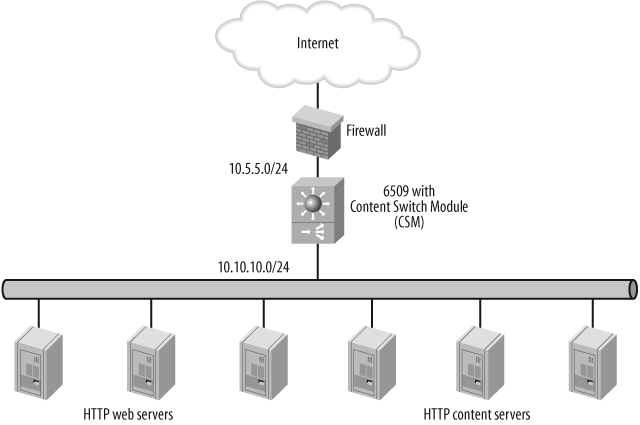Chapter 27. Server Load-Balancing Technology
Server load balancing (SLB) is what enables multiple servers to respond as if they were a single device. This idea becomes very exciting when you think in terms of web sites, or anywhere a large amount of data is being served. Large web sites can sometimes serve gigabits of data per second, while most servers as of this writing can only provide a gigabit at a time at the basic level. EtherChannels (trunks in Sun Solaris parlance) can increase that rate, but the real issue becomes one of power and scalability. Having many smaller, less expensive web servers is often more viable financially than having one large, extremely powerful server. Additionally, the idea of high availability comes into play, where having multiple smaller servers makes a lot of sense.
Figure 27-1 shows a simple load-balanced network.

Figure 27-1. Simple load-balanced network
Within Figure 27-1, there is one feed to the Internet, with six servers behind a firewall. The device connecting all the servers to the firewall is a Cisco Content Switch. For our examples, we'll use a Cisco Content Switching Module (CSM) blade in a Cisco 6509 Catalyst switch. One of the real benefits of using an integrated service module like this is that it can be completely removed from the network using only command-line instructions.
Types of Load Balancing
Server load balancing is only one ...
Get Network Warrior now with the O’Reilly learning platform.
O’Reilly members experience books, live events, courses curated by job role, and more from O’Reilly and nearly 200 top publishers.

